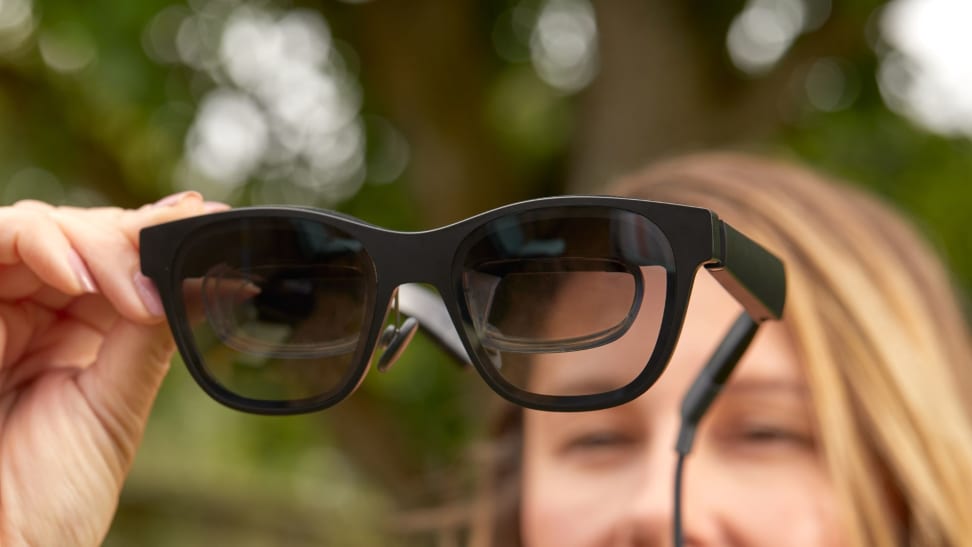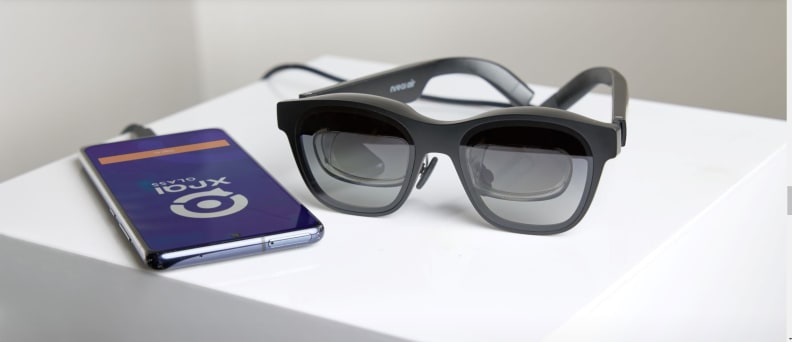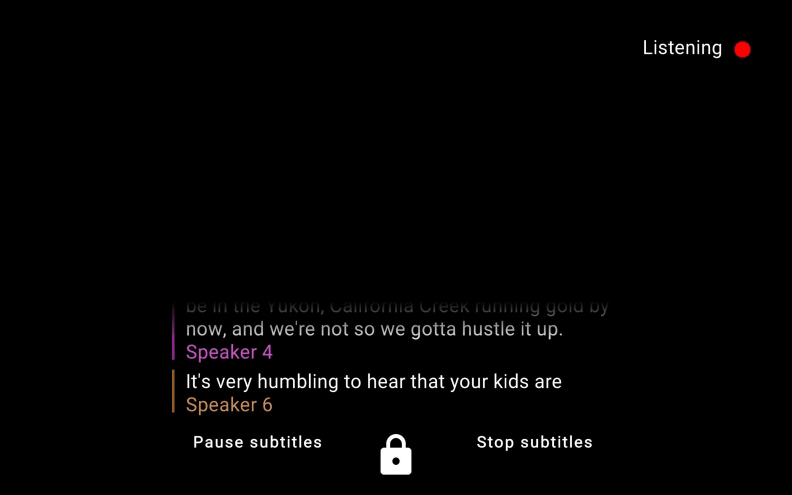 Credit:
Xrai Glass
Credit:
Xrai Glass
Products are chosen independently by our editors. Purchases made through our links may earn us a commission.
As an app and as a company, Xrai Glass has one simple mission: to subtitle the world for anyone who prefers or requires text feedback instead of sound. While the likes of Apple and Google both have live transcription features built into their respective mobile operating systems, Xrai takes that concept one step further by pairing similar technology with cutting-edge augmented reality glasses. That means, instead of having to look down at a phone to read a conversation, the words in your environment appear on lenses right in front of your eyes.
Founded in July of 2022, Xrai Glass is the brainchild of CEO Dan Scarfe and Chief Sales & Marketing Officer Mitchell Feldman. Leveraging a longstanding history in cloud technologies and software development, the small London-based outfit has forged partnerships with tech’s biggest brands to create a life-altering subtitle experience. Xrai is one of many organization’s demoing its technology at CES 2023.

The Xrai Glass app transcribes environmental audio and translates it into text that can be viewed on a phone or in AR glasses.
As Feldman tells Reviewed, the idea for Xrai arrived when Scarfe was visiting his father, who is hard-of-hearing, and he realized how unengaged the man was with the television and conversations around him. The situation compelled Scarfe to consider a solution to the problem, and it’s one that he and his company have found in relatively short order.
An accurate transcription app
At its core, Xrai Glass is an Android app tailored to live transcription. By default, it uses your phone’s microphone to convert live text to speech, while recognizing different voices and transcribing those words in a live conversational thread, not unlike a group text message.
That basic concept, however, allowed Feldman and his team to see how useful the technology might be for a variety of scenarios. “We managed to understand more of the value that we're delivering,” Feldman says.
“It went beyond the hard-of-hearing and deaf community. It went to people with all kinds of neurodiverse conditions, whether it be ADHD or audio processing disorder (ADP). We found that people who read words cognitively understand the conversation more so than if they were hearing it. We discovered that, once we've cleaned up all of the sound around us and turned it into text, we could do all kinds of clever stuff, like translate it in real time into nine different languages.”
Through a brief pre-CES demonstration of the Xrai Glass app, I was personally able to see these features in action. Not only was the app able to accurately transcribe our virtual interview with a strong level of accuracy, but, by heading into a fairly streamlined settings menu, I was able to switch the transcription language into Italian and watch as Italian-language words appeared on screen to match our English conversation.

The Xrai Glass app saves transcriptions and conversations to be read later.
It’s strides like these that compelled Xrai Glass to release its app so soon after a limited preview period that started in late July. “We were getting regular feedback from the users and then hearing things like ‘oh my God, I'll never have to say pardon again’ or ‘all of a sudden I don't have to talk to my colleagues at work and ask them for a recap of a meeting.’ That made us realize that it was ready,” Feldman describes.
The Xrai Glass app is currently available for Android users on the Google Play store and will hopefully release on iOS at a later date.
Learn more at the Google Play Store
AR partnerships
While Scarfe and Feldman were adamant that Xrai Glass is a software-first company, augmented reality glasses are a key piece of the puzzle. Because, while the transcription itself appears solid, the ability to transition that innovation to a prominent visual space is a major part of the product’s purpose.
Put on a connected pair of AR specs and launch the app in AR mode, and you’ll see conversations appear in front of your eyes as text. And, should the words be placed in a distracting part of your field of view, the captions can be moved to any area of 3D space the user sees fit.
The Xrai Glass app is made to function with any pair of AR glasses, but its makers have specifically partnered with Nreal Air to offer a more premium experience with extended features. A pair of the glasses currently retails for around $380 on Amazon. And, should you want the support of an additional microphone, Xrai recommends these $75 Razer Sieren Bluetooth mics for placement anywhere transcription is especially necessary. Scarfe, in particular, has one under his TV so Xrai can better pick up TV dialogue.
It may seem counterintuitive that Xrai Glass relies so heavily on the products of others, but the company sees forging alliances as a sensible philosophy. “We don't want to necessarily solve those challenges when others already are,” Scarfe explains. “We want to help people to assemble all of the very best pieces here: the best glasses, the best transcription providers, the best microphones, the best everything, and create an experience that changes their life.”
Looking to the future
As for the future of Xrai, our demo suggests there are plenty of areas in which the nascent transcription offering might grow. Feldman, in particular, called out a potential situation where the cameras found on AR glasses might be used to improve captioning accuracy.

In this AR mode, transcriptions can be viewed on AR glasses.
“You can imagine a world where we are using sophisticated machine learning models to do lip reading, and to synthesize that lip reading with the audio we have to get a high degree of certainty of what you're hearing,” He muses. And, while Xrai’s transcription is currently being handled by only Amazon Web Services, the company envisions a future where users will be able to choose from multiple transcription providers to select one that works best for a given situation.
The accessibility benefits for Xrai Glass are obvious, but there’s plenty of promise for use in the broader tech sphere too. Once the mayhem of CES has died down, Reviewed hopes to do a full-featured analysis of Xrai AR at home. For now, however, this was one of our favorite accessibility products at CES.
The product experts at Reviewed have all your shopping needs covered. Follow Reviewed on Facebook, Twitter, Instagram, TikTok, or Flipboard for the latest deals, product reviews, and more.


